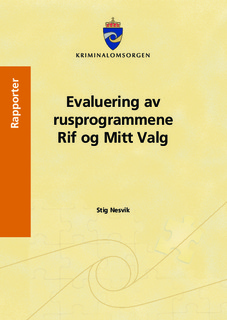| dc.description.abstract | This report contains an evaluation of a drug-abuse programme used in prisons and by the
Probation service. The evaluation focuses on tests taken before and after the programme.
The test is divided into six different sections, where each section measures change in the
given problem areas. Section one and two consist of knowledge-tests where the participants
answer questions about alcohol and drug use. In section three a map is drawn
of how the use of drugs and alcohol can influence the individual and his/her
surroundings. Section four deals with different alcohol related dilemmas. In section five,
attitudes and knowledge about recidivism are measured. In the final section problem
solving is discussed. The various sections are denoted as variables. There are 88 participants
from five different units in the Correctional Service: Hamar prison, Ringerike
prison, Ila Detention and Security Prison and the Probation service units in Akershus and
Østfold.
The combined results for all participants show a moderately positive outcome as
regards the differences between the prior and subsequent tests for all six variables
although they are inconsistent. We find the strongest result in the final section, problem
solving. In this test, the participants score a 10 per cent increase. The weakest results are
found for the variables influence in section three and alcohol and drug use in section
one and two. Here the results show a 3 – 3.5 per cent increase.
Comparing the different units we find approximately the same
tendencies as in the combined results. These patterns are the same when participants
from prison are compared with participants from the probation service. The results,
however, are slightly influenced by the number of participants in the separate units –
which lead to some deviation from the combined results.
The overall results suffer from some methodological weaknesses, both in test
conduction, the procedure of registration, the test-design and the group size. These
components influence (in different ways) the evaluation of the survey and its results. | en_US |
